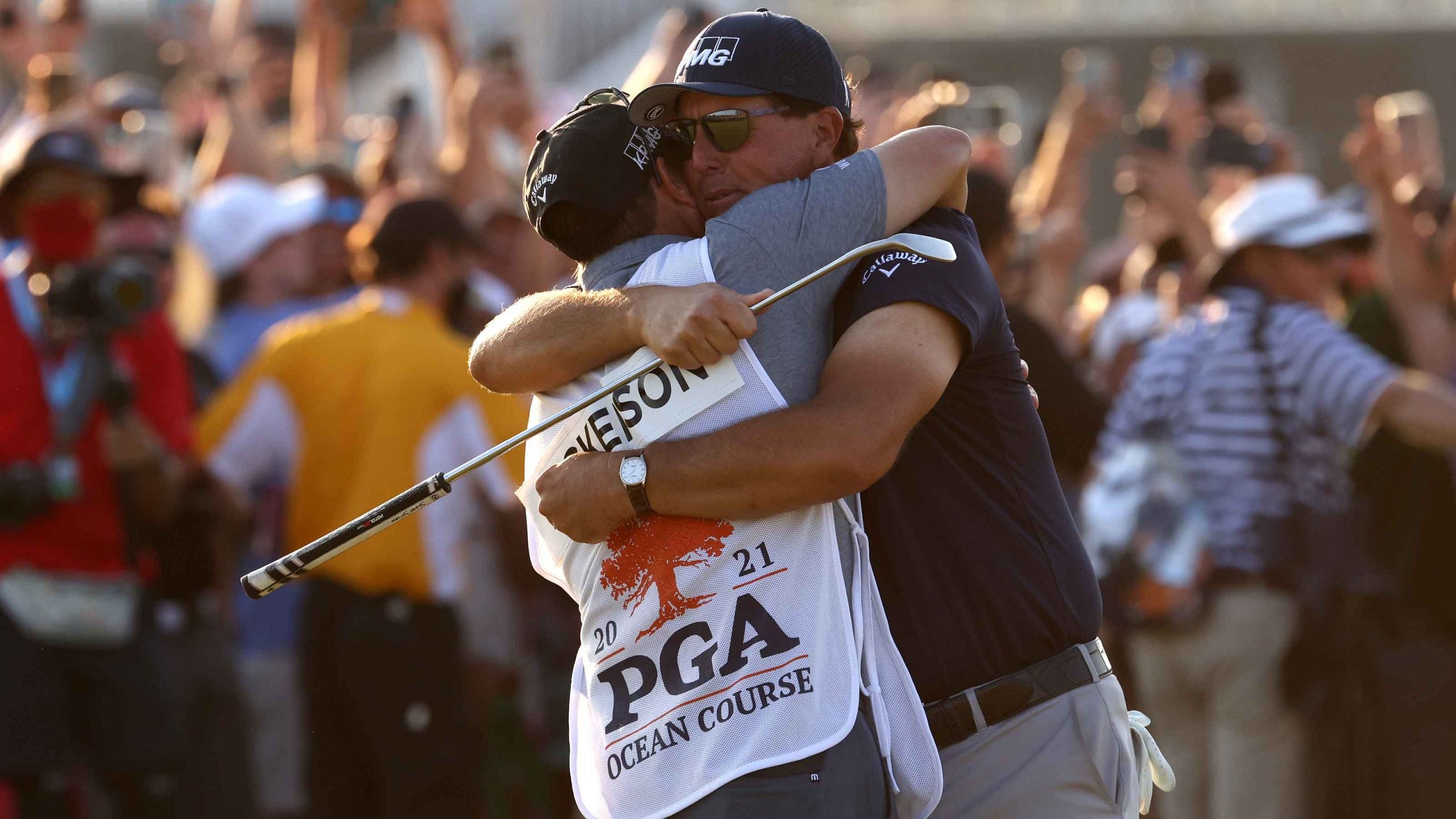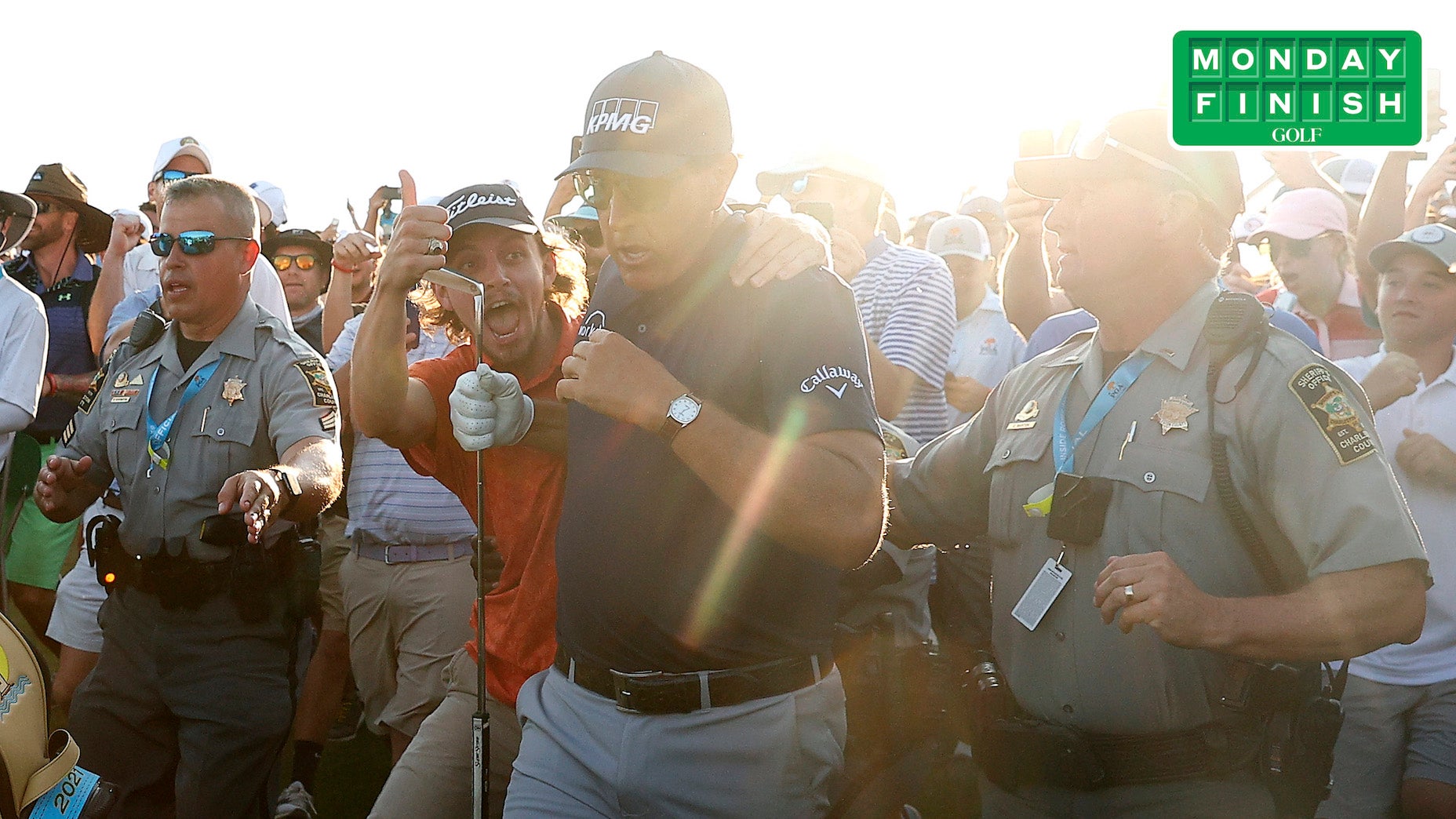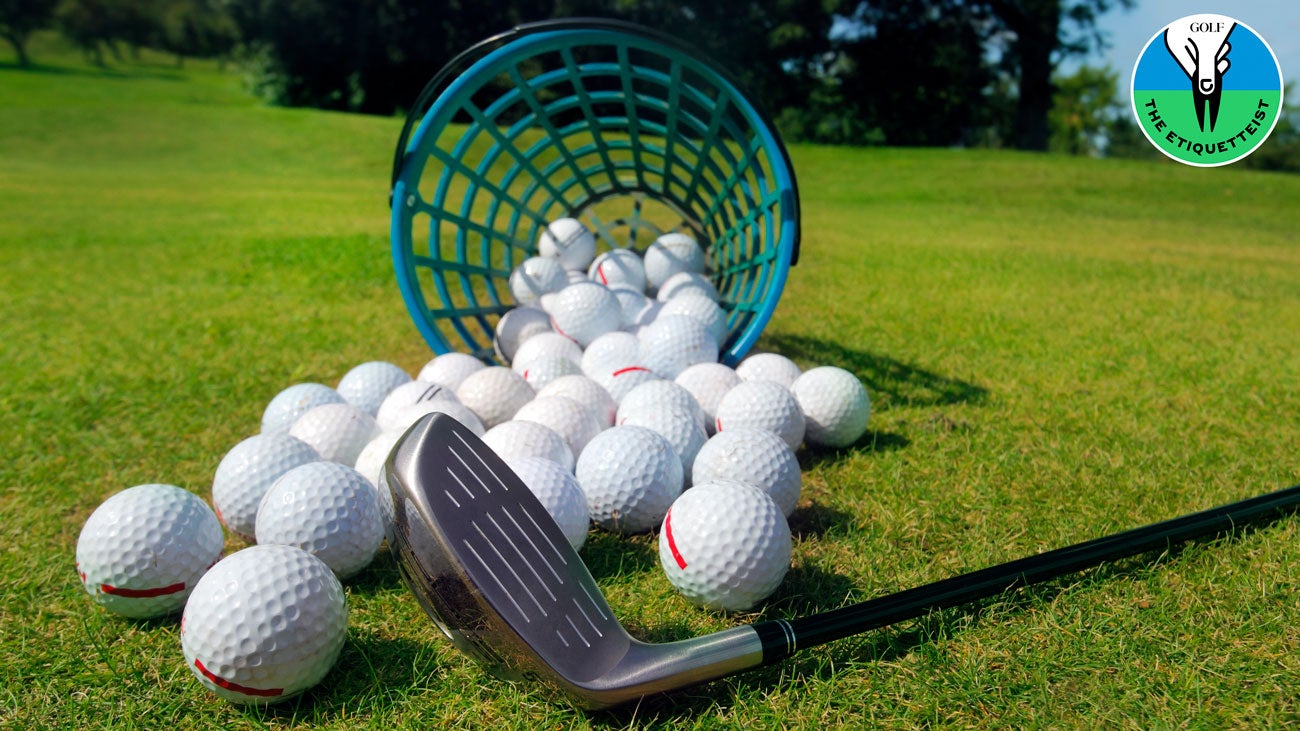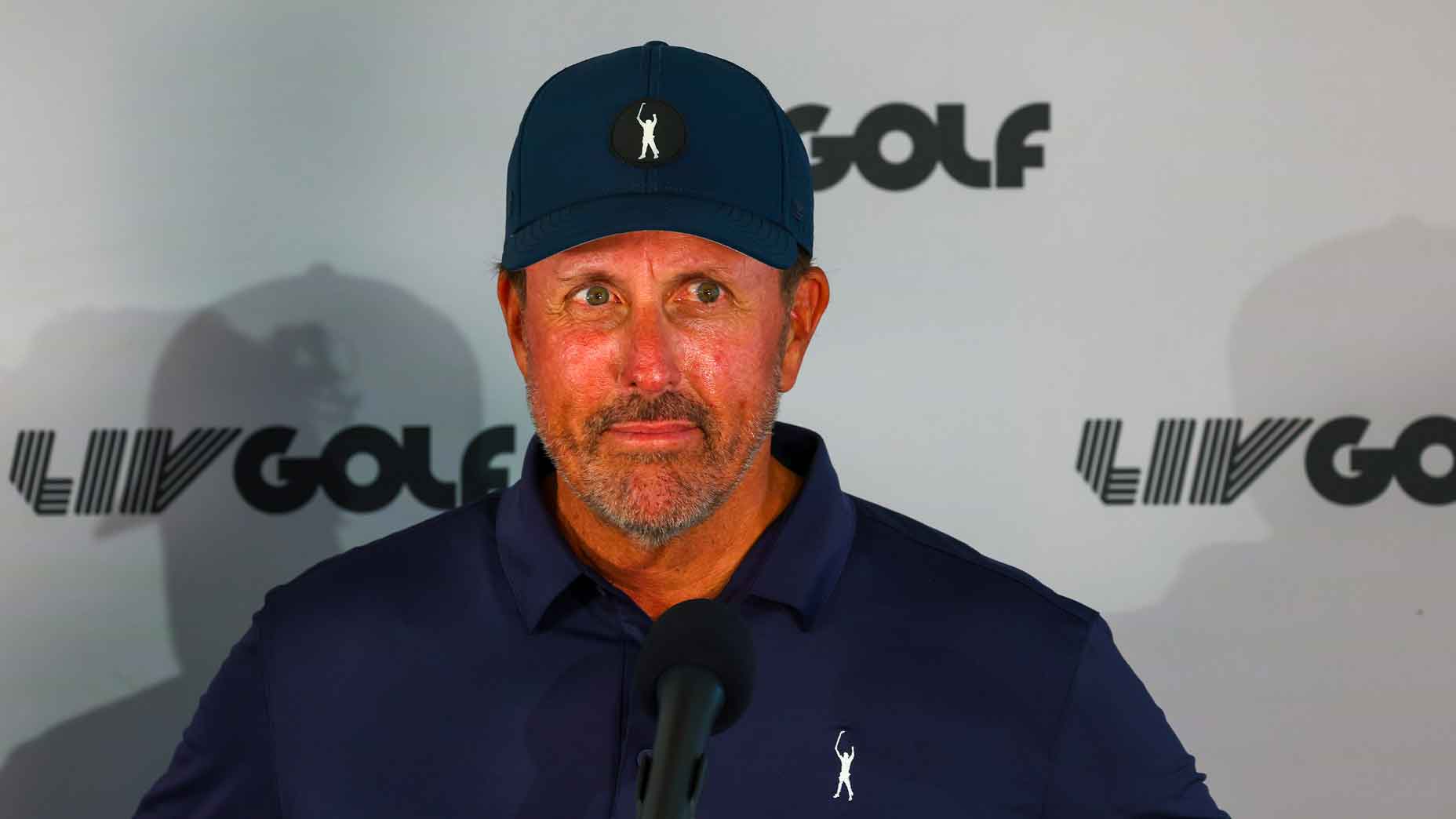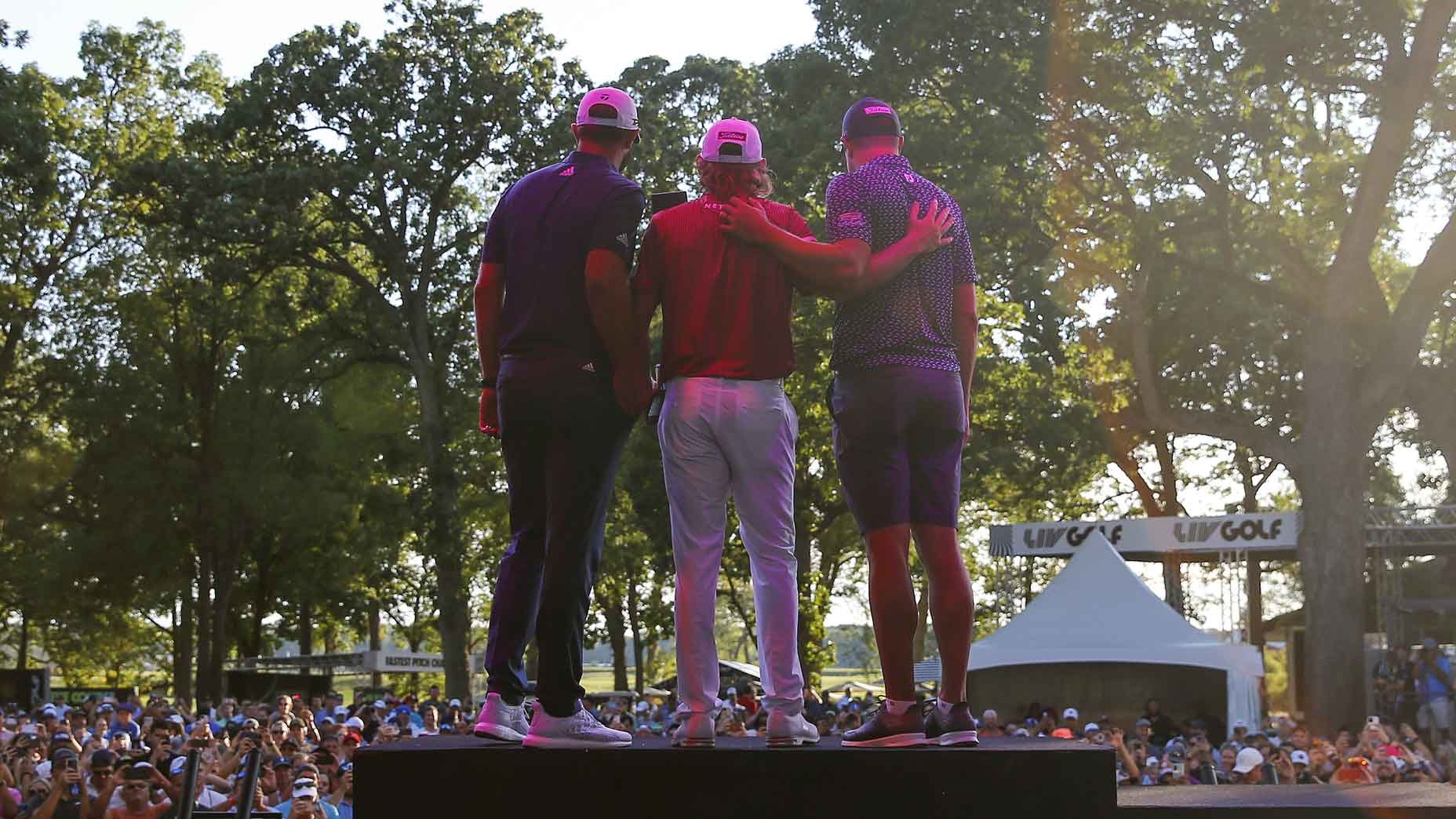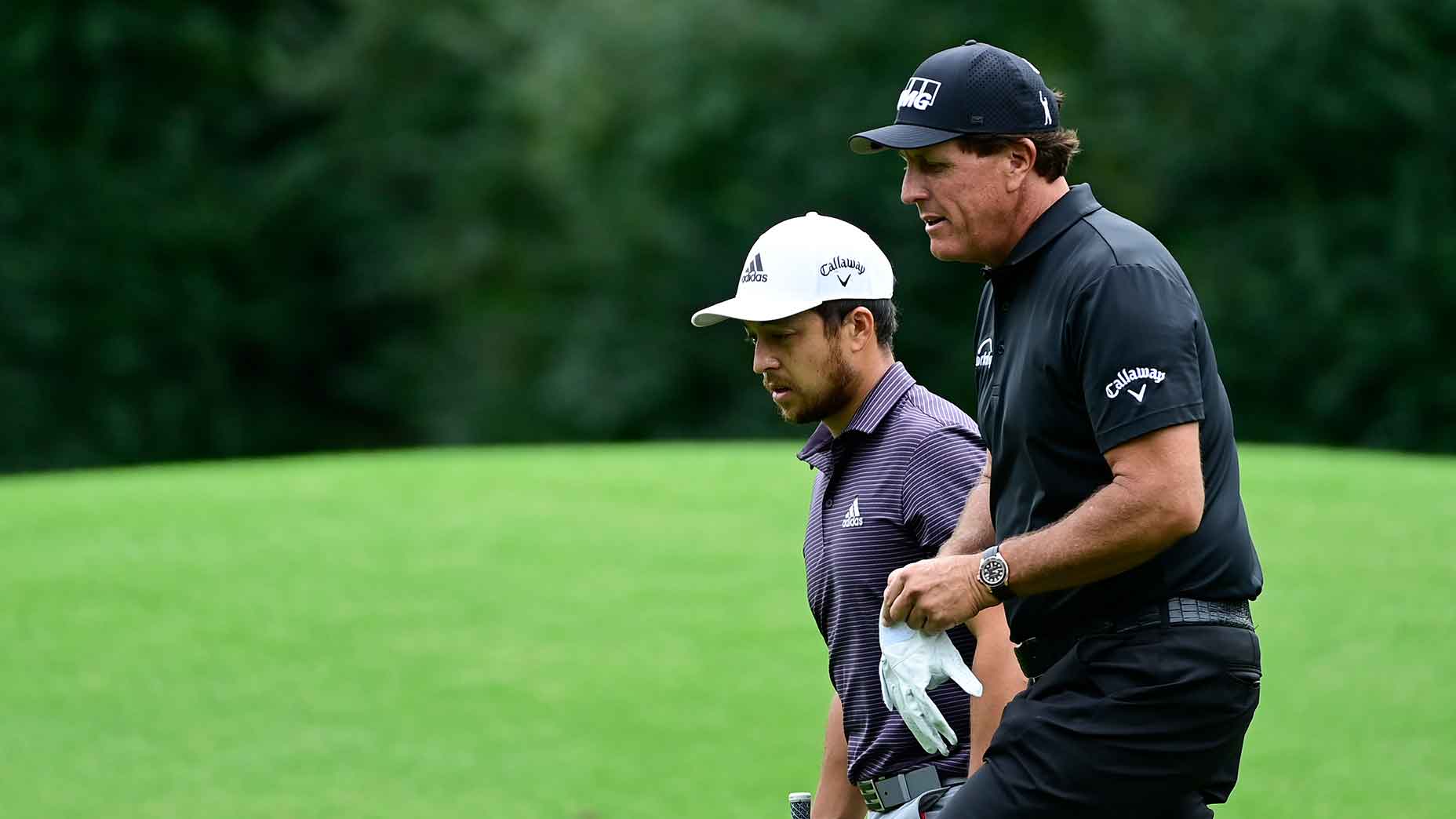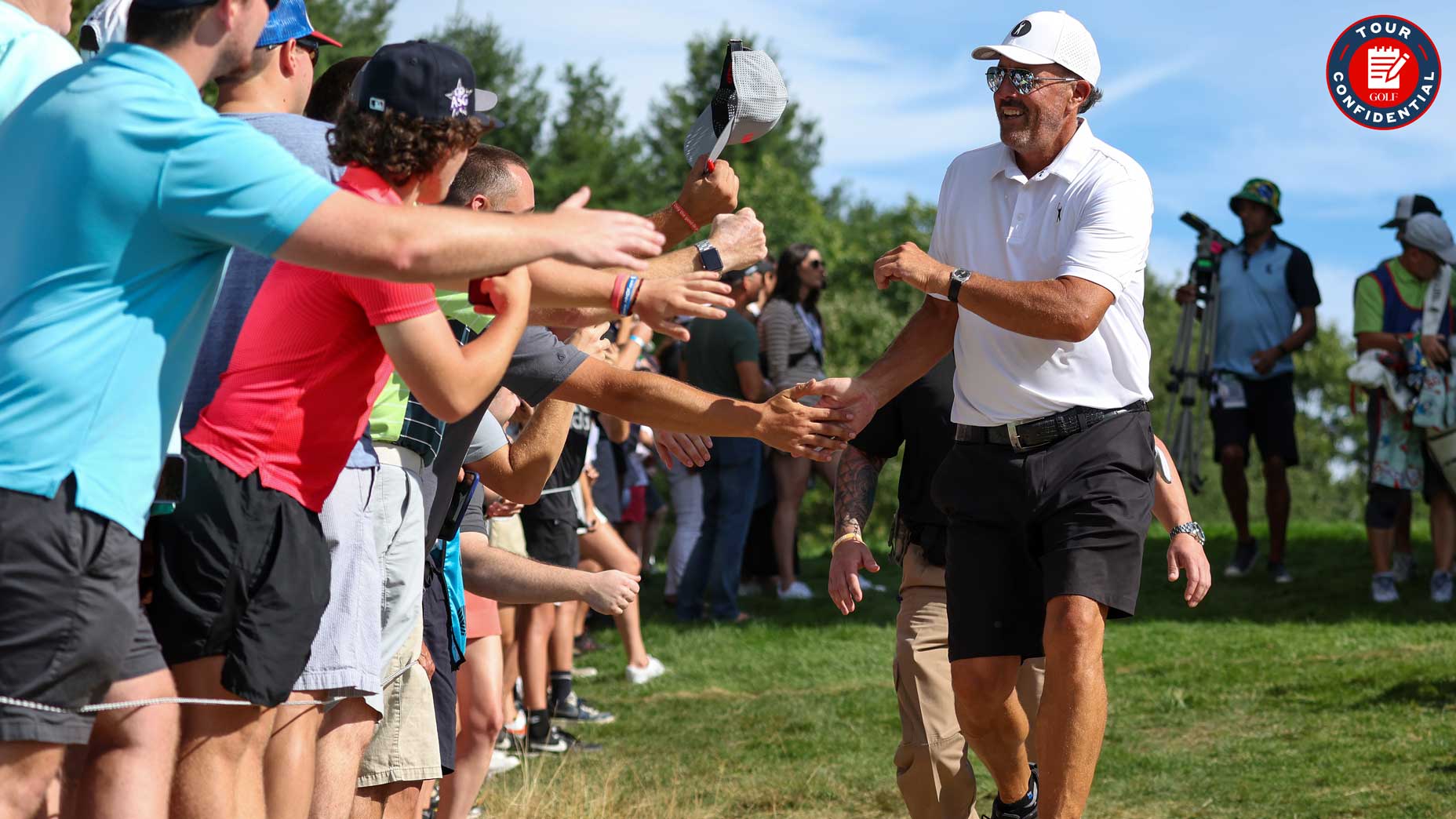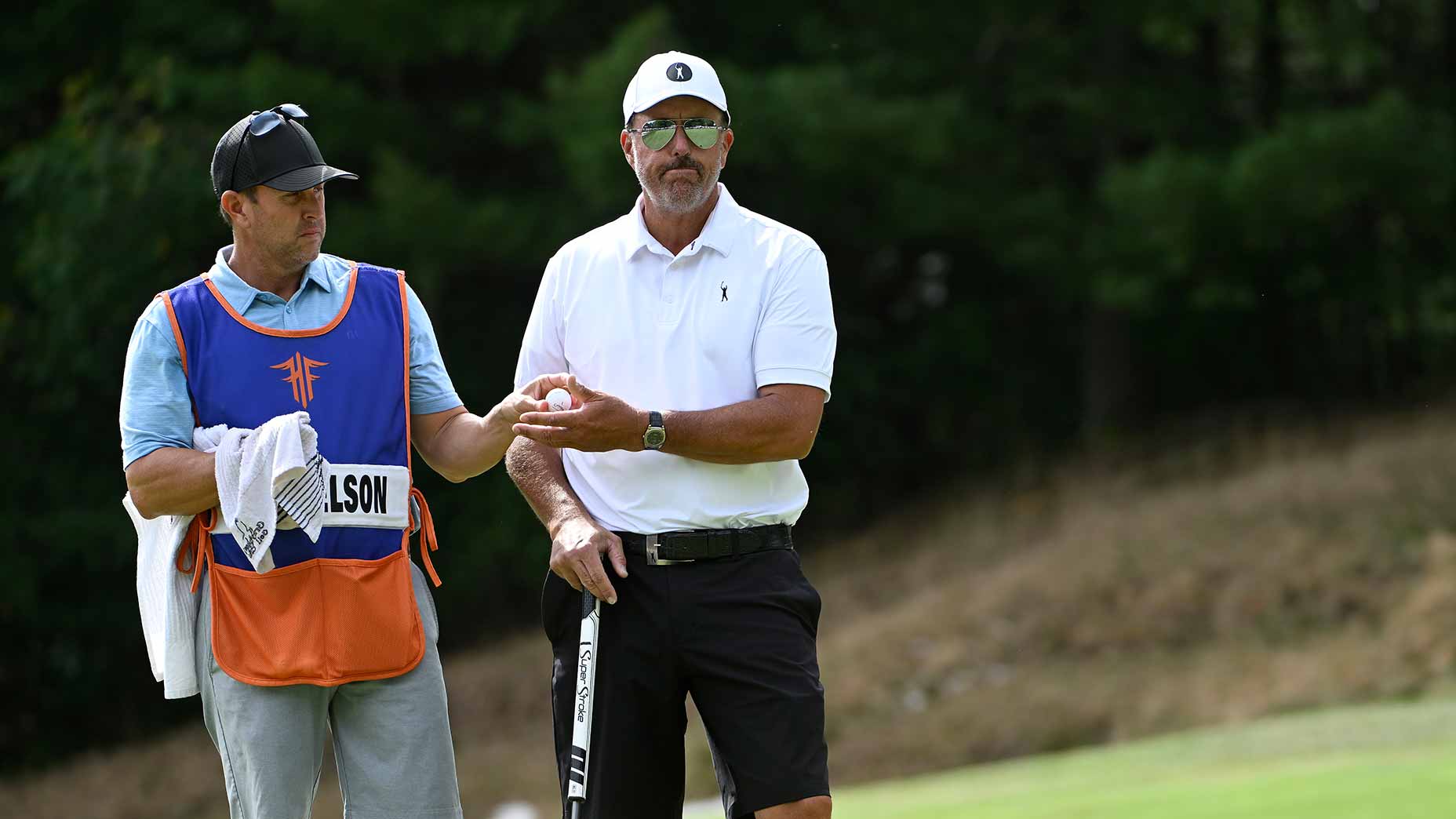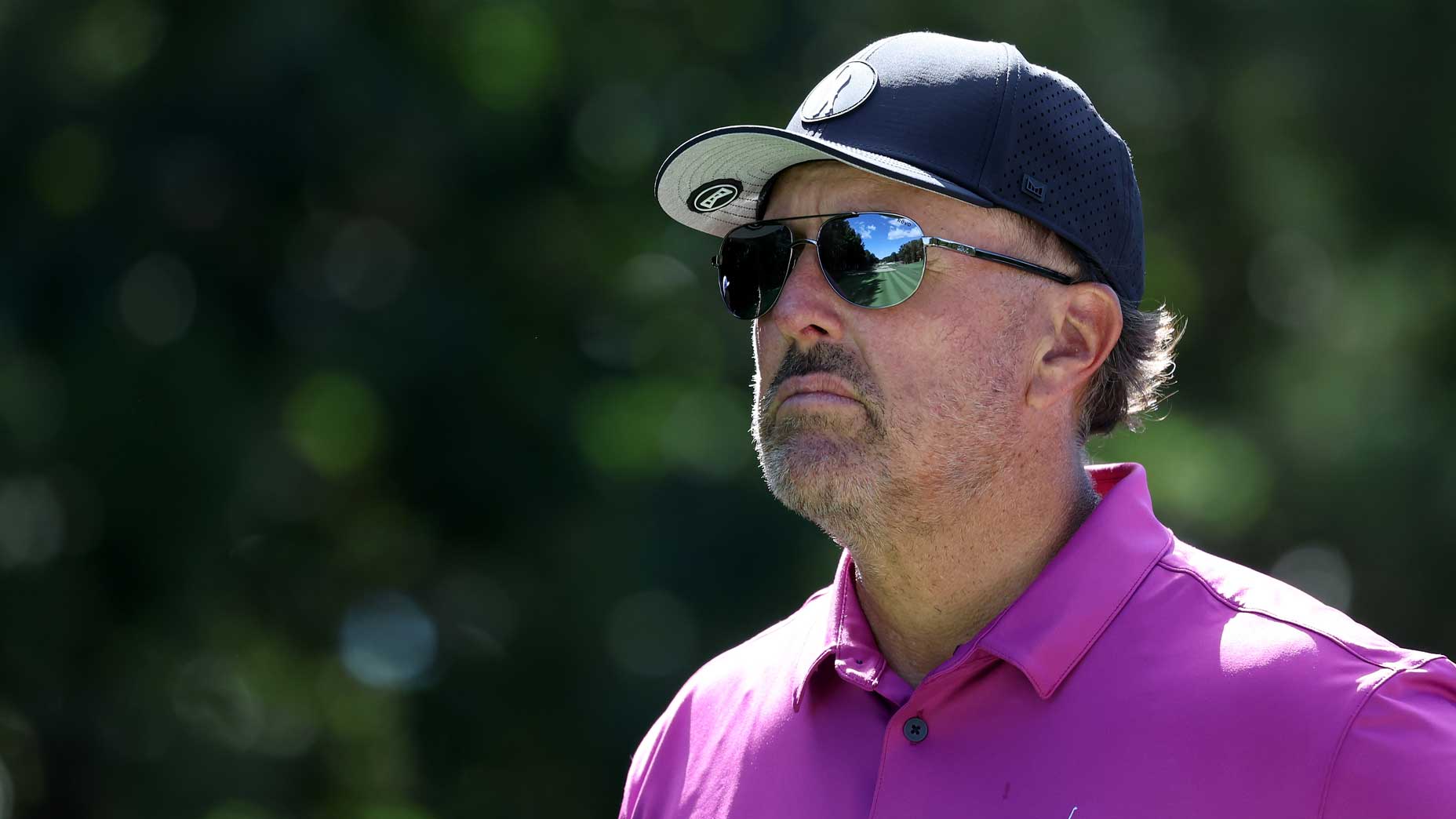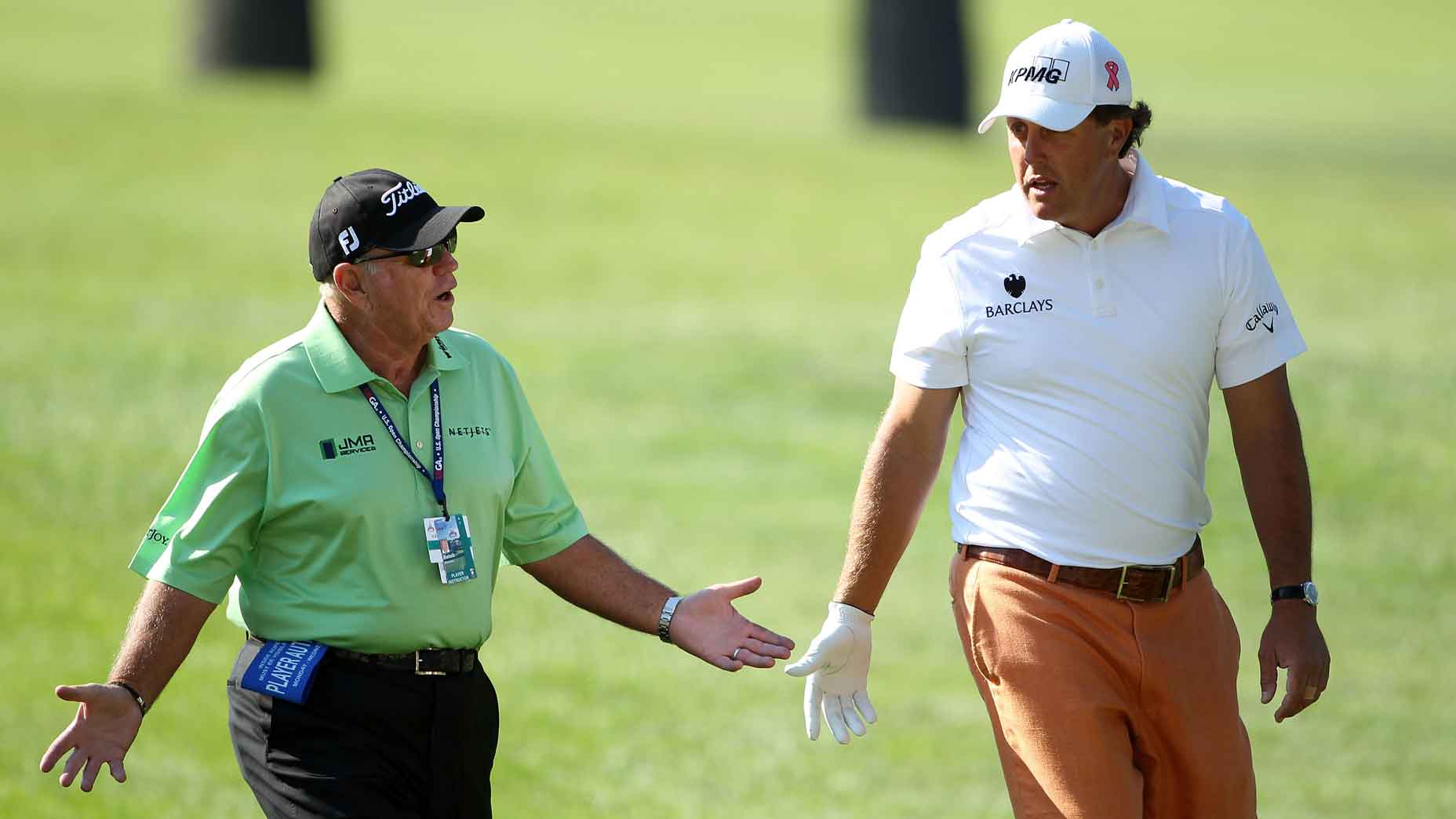Who was that guy? Phil Mickelson not his usual showman self at PGA Championship
- Share on Facebook
- Share on Twitter
- Share by Email
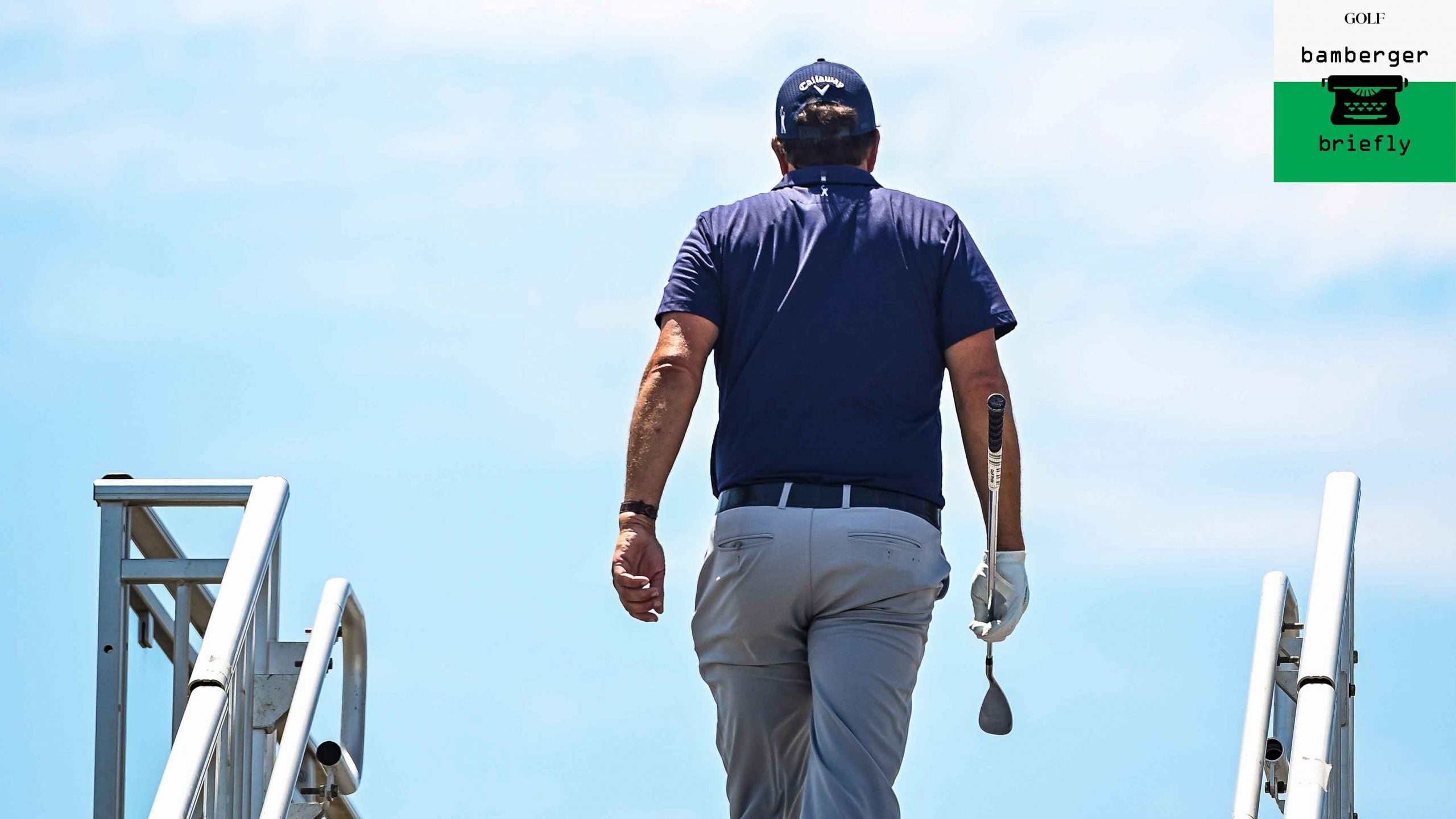
Phil Mickelson at the Ocean Course on Sunday.
getty images
On Thursday at the PGA Championship, it was hard not to worry about Phil. He was playing with two other past PGA winners, Padraig Harrington and Jason Day, and all three of them are world-class, on-course chit-chatters. But Phil, at least from the glimpses witnessed by this reporter, was barely engaging the others. Even his press conferences lacked their usual tone. Almost terse. Never expansive. No pontificating.
On the course, in the early-going, he was struggling. Three over through 6. If anything, fast starts have been Phil’s M.O. of late. We all remember the 64 with which he opened the Quail Hollow tournament. This was never going to be that.
Mickelson did well to sign for 70, on that first day at the windblown Ocean Course, but so did six other guys. Six more shot 69. Canada’s Corey Conners carded (four times fast) a 67. There was nothing on Thursday that would predict where Mickelson would be in Sunday’s gloaming.
Phil Mickelson didn’t win a major at 50 merely because he’s talentedBy: Michael Bamberger
In general, there was nothing to suggest that Phil would be hoisting 30 pounds of golf history (the Wanamaker Trophy) come Sunday night at Kiawah.
He had said, on at least one occasion — firmly, in February 2019 — that he would not accept a USGA exemption to the U.S. Open. Much more recently, he expressed ambivalence about accepting one. There’s always subtext with Phil, and what went unsaid was Mickelson’s deep ambivalence about the USGA as an organization.
(All the USGA tries to do is make a great game — one that requires complicated rules because the playing fields are so irregular — better. Why cannot it get the respect it deserves?)
But, in the end, Mickelson did accept the USGA’s offer, for this year’s U.S. Open at Torrey Pines, the public course in his backyard. (You can imagine the back-and-forth between the two camps. To wit: If we offer, will he accept? In the end, because of his PGA Championship win, he won’t need it.) Phil’s reversal, does that sound like Phil being Phil? It does not, not to this reporter.
Then consider this incredibly straight-forward explanation, from Phil, on Phil, after the first round of the Valspar:
“I have a hard time keeping focused for a period of time. It’s a physiological thing. I’ve actually been meeting with a lot of people and trying to figure this out. I go through spells of three or four holes, like I did Thursday, Friday at Augusta, where I’ll throw five or six shots away in a four-hole stretch. I just kind of go mind-numb. My ability to regain focus has been the biggest challenge as I’ve gotten older. And I just, I don’t have a great solution right now. But I’m working on it.”
Was Phil showing off for David Feherty? He was not. Was he trying to sell blue chewing gum? He was not. Was he goofing on Elvis? He was not.
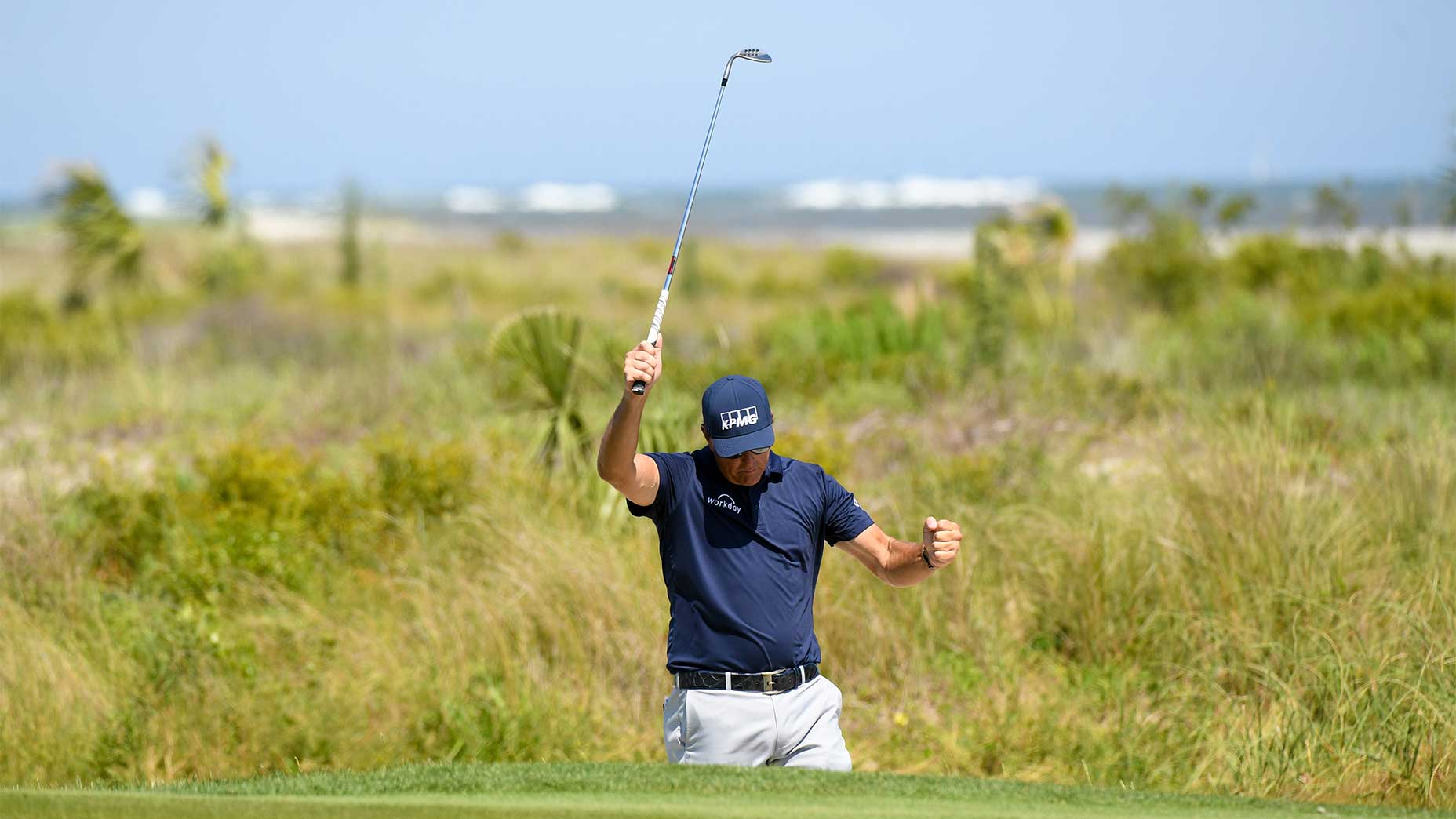
It actually was Mickelson as we have never seen him before. He was, honestly and poignantly, describing the state of his mind and self.
You wanted to run up to Steve Loy (Mickelson’s college coach, longtime agent and alter ego) and say, “What have you done with him — what have you done with the Phil Mickelson we know?” But this was a different Phil. Along with all the external things — his new body, new wardrobe, new sunglasses — we were seeing a new under-the-hood Phil.
Monday Finish: What you didn’t see on TV from Phil Mickelson’s PGA winBy: Dylan Dethier
Phil the Showman, so in evidence at the Match II, where he and Tom Brady teamed up to beat Tiger Woods and Peyton Manning, was last seen, in full, more than a year ago. There are no signs of Match III — at least not with Woods, who, before his Feb. 23 car crash, had not shown interest in keeping the bit going. Phil Mickelson can always make money being Phil Mickelson. But, at his core, he seems to have realized who he is: an immensely skillful and driven golfer, with all the physical ability he needs to compete and contend, if he could get over his mental hurdle.
In 2006, when Mickelson won the Masters for the second time, he was fortunate to have Fred Couples as his Sunday playing partner. Couples was trying to beat Mickelson, of course, but in terms of demeanor, they almost looked to be playing a practice round. Couples got a kick out of Mickelson’s two drivers, one for fades, one for draws.
Sunday, at Kiawah, Mickelson was fortunate to have Brooks Koepka as his playing partner. Koepka on the course is all business, no chat. That’s what Mickelson needs now in a playing partner. He needs to be at peace with his ball for that minute he’s beside it, behind it, over it. On his way there, he needs to get in the mood. It’s different. It’s interesting. It’s better. It’s more real.
It worked. He won. We all saw that.
Do not fear, do not worry. Old Phil has not died. About six hours after tapping in for his two-shot win, Mickelson was in the air, jetting his way home, to San Diego, tweeting like a madman, and like his old self. Responding to somebody who said he counted over a thousand thumbs-ups from Mickelson, Phil responded, with, “1439 to be exact.”
There he was. Old Phil, alive and well.
Michael Bamberger welcomes your comments at Michael.Bamberger@Golf.com
Latest In News

Michael Bamberger
Golf.com Contributor
Michael Bamberger writes for GOLF Magazine and GOLF.com. Before that, he spent nearly 23 years as senior writer for Sports Illustrated. After college, he worked as a newspaper reporter, first for the (Martha’s) Vineyard Gazette, later for The Philadelphia Inquirer. He has written a variety of books about golf and other subjects, the most recent of which is The Second Life of Tiger Woods. His magazine work has been featured in multiple editions of The Best American Sports Writing. He holds a U.S. patent on The E-Club, a utility golf club. In 2016, he was given the Donald Ross Award by the American Society of Golf Course Architects, the organization’s highest honor.

